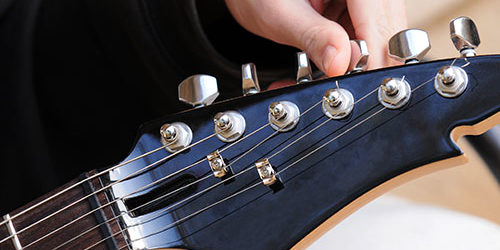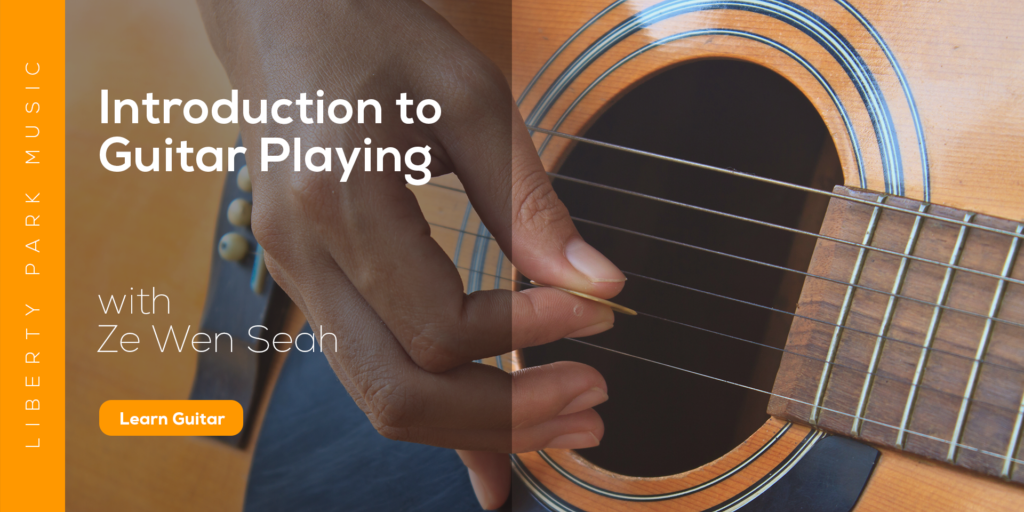
Most guitarists wish they have more speed and accuracy, and with good reason too. Although it’s not necessary to play extremely fast for effective expression of musical ideas (Eric Clapton and B.B. King for example don’t play at ridiculous speeds), it definitely is a good tool to have!
In this article, we will explore a couple of exercises and ideas to help build speed and accuracy.
Metronome
Unless stated otherwise, all of the following exercises require the use of a metronome. In fact, you should get into the habit of using a metronome whenever you practice because it is the tool that will help you play faster and cleaner.
The metronome helps you in two ways.
- First, it teaches you to stay in time. Rhythm is a huge part of playing music, and if you have trouble staying in time, everything will sound messy.
- It also clearly indicates your progress. If today you only get to 60 bpm, but the day after you make it to 120 bpm, you’ll know that you’ve made some progress in speed. A clear indication of progress helps with motivation, so motivate yourself by using a metronome.
As you start to build up speed with these exercises, oftentimes you will want to halve the speed of the metronome so it doesn’t get too distracting. For example, once you’ve made it to about 180 bpm, the constant beating of the metronome may get a little annoying. The solution is, if you are playing quarter notes at 180 bpm, play eighth notes at 90 bpm instead. You’ll be playing everything at the same speed with fewer beats from the metronome.
A quick word on speed
The key to playing fast is, after having sound technique, doing it in an effortless manner. It may seem counter-intuitive, but I can’t stress enough the importance to be completely relaxed when playing at faster speeds.
Try this out to see what I mean: flex your forearm and move your fingers as fast as you can, then try it without flexing your forearm. You should find that your fingers feel freer and move faster when your forearm is relaxed. Similarly, you can try sprinting while flexing your quads, then sprint again while relaxed. The results will be the same: your body moves faster and more efficiently when you are relaxed.
I bring up this point because a lot of people, myself included, tend to set the metronome way too fast when practicing these exercises. If your body tenses up at higher speeds, chances are, you’re going too fast, even if you’re hitting the notes cleanly. If you can’t play fast effortlessly, you’re not there yet and need to spend more time at a slower speed. It is better to spend more time making sure your technique is sound, rather than rushing through the exercises and creating bad habits.
Chromatic exercise
This first exercise should be familiar to everyone. Begin on the first four frets, while dedicating one finger to each fret (index to first, middle to second, ring to third, pinky to fourth). You will just be playing the notes on frets one, two, three, and four, while alternate picking with your right hand. Do this on all six strings, and increase the speed of the metronome as you progress.
|------------------------------------------1-2-3-4-|
|----------------------------------1-2-3-4---------|
|--------------------------1-2-3-4-----------------|
|------------------1-2-3-4-------------------------|
|----------1-2-3-4---------------------------------|
|--1-2-3-4-----------------------------------------|
Try this same exercise higher up the neck as well so you get the feeling of playing fast at the higher frets.
|------------------------------------------5-6-7-8-|
|----------------------------------5-6-7-8---------|
|--------------------------5-6-7-8-----------------|
|------------------5-6-7-8-------------------------|
|----------5-6-7-8---------------------------------|
|--5-6-7-8-----------------------------------------|
Remember to take note of the speed of the metronome at the end of your practice to track your progress!
Scales
For those of you that know how to play scales, do the same thing as the chromatic exercise, but play your scales instead. This will help you kill two birds with one stone; you’re working on your technique and on memorising your scale shapes.
Learn with LPM
If you are looking to review your guitar basics like tuning, setup, reading TABS etc. with Ze, check out his Intro to Guitar Playing Course for Beginners.
Finger gym
This is one of my favorite exercises for building technique because it looks like it only works on hammer-ons and pull-offs, but it has many more benefits. Let’s look at how to do the exercise first.
This exercise requires you to know how to execute your hammer-on and pull-off techniques, so if you’re unsure of how to do these, skip this exercise.
Start by turning on a metronome at a SLOW speed. Between 60-80 bpm is good. The key to this exercise is to stay slow. Similar to the chromatic exercise, we will be staying within the first four frets with one finger dedicated to each fret.
We will begin with hammer-ons with every possible combination of two fingers. Here are all the combinations:
- Index and middle
- Middle and ring
- Ring and pinky
- Index and ring
- Middle and pinky
- Index and pinky
Play quarter notes (one note per beat) while doing this exercise.
|---------------------------1h2--|
|----------------------1h2-------|
|-----------------1h2------------|
|------------1h2-----------------|
|-------1h2----------------------|
|--1h2---------------------------|
This will be between your index and middle fingers
|---------------------------2h3--|
|----------------------2h3-------|
|-----------------2h3------------|
|------------2h3-----------------|
|-------2h3----------------------|
|--2h3---------------------------|
This will be between your middle and ring fingers
Do this for every combination of two fingers, then do the same thing with pull-offs.
|---------------------------2p1--|
|----------------------2p1-------|
|-----------------2p1------------|
|------------2p1-----------------|
|-------2p1----------------------|
|--2p1---------------------------|
Middle finger pull-off to index finger
|---------------------------3p2--|
|----------------------3p2-------|
|-----------------3p2------------|
|------------3p2-----------------|
|-------3p2----------------------|
|--3p2---------------------------|
Ring finger pull-off to middle
The first thing this exercise works on is your timing for hammer-ons and pull-offs. Timing for these two techniques is tricky, especially the hammer-ons, because of a slight delay between when the technique is executed and when a sound is produced. Use this exercise to learn the length of that slight delay, so that your hammer-ons and pull-offs are exactly in time with the metronome.
This exercise also works on finger independence. Your fingers might feel stiff at first, when doing a hammer-on or pull-off between your ring and pinky fingers, because most people are not able to move their pinkies independently of their ring fingers.
Finally, this exercise works on finger accuracy because in order to get a good hammer-on sound, you need to land your finger on its “sweet spot.” Learning how to land on the sweet spot while doing a hammer-on translates to everything else.
The spider
This exercise may be a brain-buster at first, but stick with it and you’ll see many improvements in your right and left hand coordination. This exercise has you moving diagonally across strings. Similar to the other exercises, dedicate one finger per fret.
Remember to alternate pick with your right hand!
|--5-6---7-----8-----------------------------------|
|------5---6-----7-----8---------------------------|
|------------5-----6-----7-----8-------------------|
|--------------------5-----6-----7-----8-----------|
|----------------------------5-----6-----7---8-----|
|------------------------------------5-----6---7-8-|
|------------------------------------8-----7---6-5-| |----------------------------8-----7-----6---5-----| |--------------------8-----7-----6-----5-----------| |------------8-----7-----6-----5-------------------| |------8---7-----6-----5---------------------------| |--8-7---6-----5-----------------------------------|
Once you get comfortable with this pattern, try ascending and descending the fretboard while doing this exercise.
Fast, accurate, and effortless
Remember that the point of all of these exercises is to work to a fast speed while remaining relaxed. If you find yourself tensing up, slow down. Always set the metronome at a speed that isn’t too slow to the point you get bored and not too fast so you’re struggling. Every new technique you pick up should be practiced with these fundamental ideas in mind. Start slow, relax, speed up, relax.
Patience is the key in these exercises because if you overextend yourself, you will create a lot of bad habits. If you pick up bad habits while practicing, then you’ve truly wasted your time. With practice, you should be gaining speed and accuracy, not building sloppy technique.
For more fun exercises and lessons, check out Liberty Park Music!
About the Author: Ze
Ze first began his journey playing original music and top 40s pop tunes around the country's popular venues. Eventually, through the music of John Mayer, he found a strong attraction to blues music. Ze has years of experience teaching beginners and intermediate guitarists. Currently with Liberty Park Music he is teaching Introduction to Guitar Playing for Complete Beginners, Rhythm Guitar to learn about strumming, chords and more, Guitar Essentials as a fast-track review course, and lots of Song Lessons on pop and rock hits.







